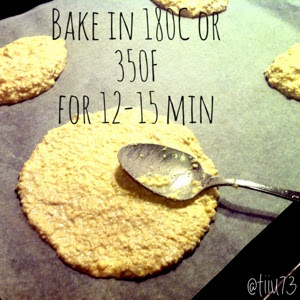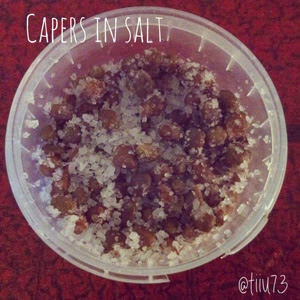Welcome to my world of healthy eating with food allergies and intolerances and enzyme deficiencies.
My diet is free of gluten, corn, soy and other legumes, yeast, mushrooms, seafood (I eat fish), processed and refined sugars and artificial sweeteners. I avoid all additives, colourings, preservatives and most importantly SULFITES which are nr. 1 trigger for me due to the gene mutations. Since I was a baby I have been allergic to banana, and then there are a couple of other vegetables and fruits I don't tolerate, so for instance you won't see any carrots in my recipes. I make everything from scratch, and in this blog I will share you some flatbread recipes I created out of necessity when I wasn't able to find anything suitable to eat.
Bread is the stable in many cuisines and even though I have been grain free for long periods I didn't notice any huge difference in my health when skipping all cereals. I don't have celiac disease, but I am IgE allergic to barley and corn, and intolerant to wheat.
This first flatbread recipe is one of the many different recipes I have created. It is the one which has less ingredients and one which is probably suitable for most of you specially with those who have sulphite/sulfite issues.
All my flatbreads are free of gluten, corn, soy and other legumes, processed sugars, yeast, sulphites/sulfites, vegetable gums or any other additives.
I am buying mostly organic food, and all my baking ingredients are organic and wholegrain. When you have serious sulphite/sulfite issues eating organic food is often the only way to go.
For the first flatbread the main ingredient will be millet. I have been gluten free since 2000, but I started to eat millet only about two years ago. With my food allergies/intolerances it was an excellent add to my safe food list and I haven't looked back. Even though most of the health freaks are going to the no grain direction I think that you can eat some gluten free grains in moderation. Probably there are some genes which are not discovered yet which will show if you tolerate some grains/cereals or not.
I have tried out all the possible diets you can think of during the last 14 years. From Paleo to GAPS and from Zone to SCD and so on. None of them suited for me perfectly, so I have just created my way of eating around the foods I tolerate well and which doesn't leave me out of energy. Since sulphites/sulfites are my biggest issue food wise, you will be reading a lot about them here.
For the ingredients I use, I will post later links to iherb site/direct websites, where I order most of the ingredients I use. I have noticed that for instance the millet flour from Italy can be totally different in texture and taste than the millet from US or India. Some flakes will absorb more liquid than others, but if you have even a little experience in the kitchen, you will notice when you need to use less or more liquid in the recipes. So the water amounts are always approx.
Basic 1 for sulphites/sulfites issues, suitable for most and specially when starting the elimination diet.
Millet-Flatbread, makes about 12-14 small flatbreads
3 1/2 dl or 1 1/2 cup of Millet flakes
2 1/2 dl or 1 cup of Millet flour
2 1/2 dl or 1 cup Brown rice flour
1/2 -1 tsp Himalaya salt or other good quality salt
c. 4 1/2 dl or 2 cups of Water, I use bottled water for my breads *
Mix all dry ingredients in a bowl and add slowly the water until you have a smooth mix. The mixture needs to be soft and smooth, not like the traditional bread dough. Cover the baking tray with a good quality baking paper and put heaping spoonfuls (tbsp) of the mixture on the paper (see the picture) and spread a circle that it is about 0,5 cm high.
Bake in the oven:
180 C=Celsius or
350 F=Fahrenheit for 12-15 minutes (depends a lot of your oven, so check that you don't burn the flatbreads)

These flatbreads keep well in the fridge up to one week, and I also freeze them and defrost when needed. This way I have something safe, ready to eat always in handy. These flatbreads are also one of my favourite foods when flying and traveling, since they keep so well, and you can always store them in your hotel's minibar.
First suggestion to eat these flatbreads when still hot from the oven is with good quality unsalted butter, grass-fed at least, and if you can find organic butter that's even better. Unsalted butter, since the salt in the butter often contains many additives, and those additives can be a problem for many. Specially if you have sulphite/sulfite issues.

Everyone knows how important it is to eat vegetables and I like this following combination: lettuce and avocado. Both are also fine for most when you are trying to avoid high sulphur/sulfur/thiol foods and lettuce is fine for most when you are doing the elimination diet.
Of course make sure to wash your lettuce well, buy organic and skip it if you think it might give you reactions. If you are dairy-free just skip the butter and spread the avocado with the fork on the flatbreads and top up with lettuce.
Enjoy!
*Water can be issue for many with sulphite/sulfite issues. I don't drink tap water so for baking I also use only bottled water. It is up to you to choose the water you prefer and what is safe for you. Sparkling water, in my opinion, gives better taste for some flatbread recipes, but again it is up to you what water you want to use.





















